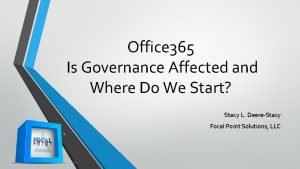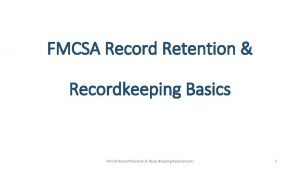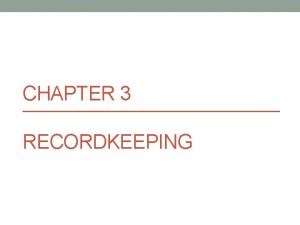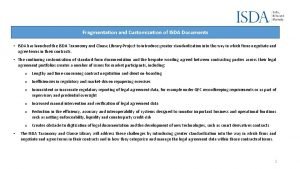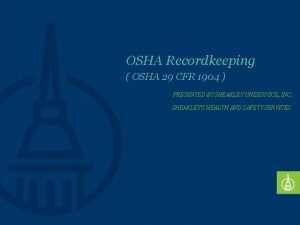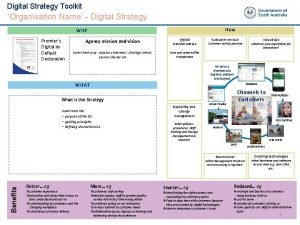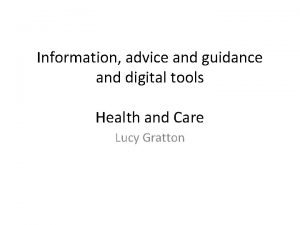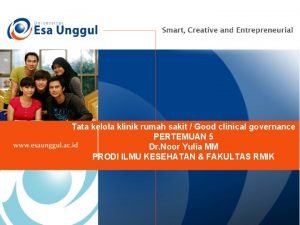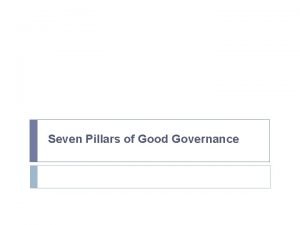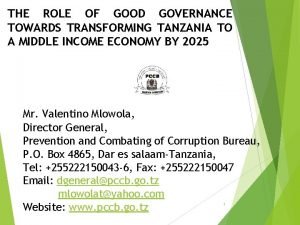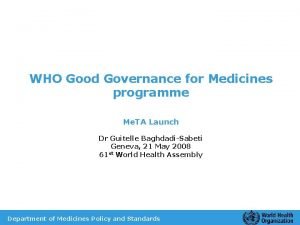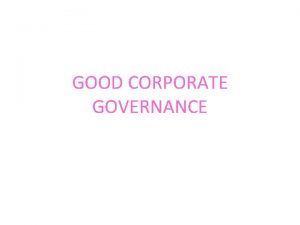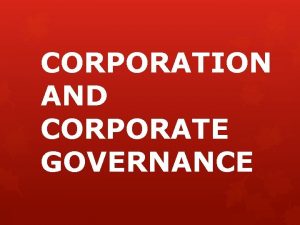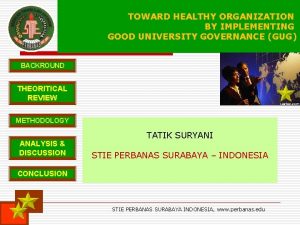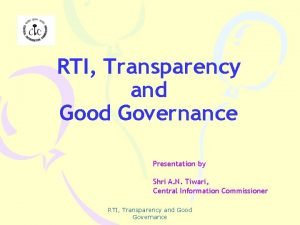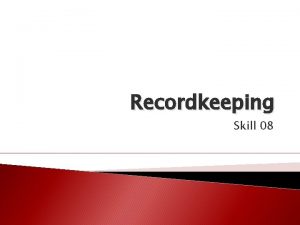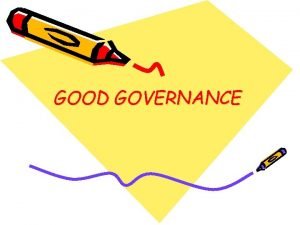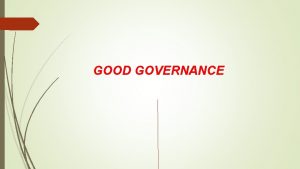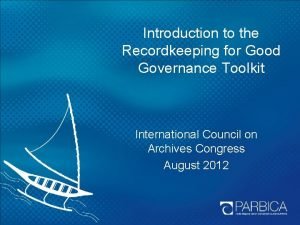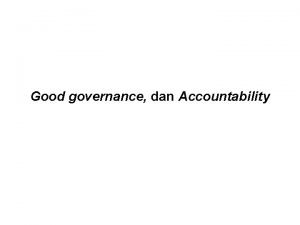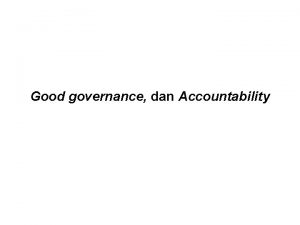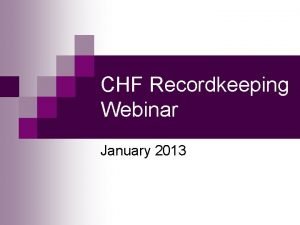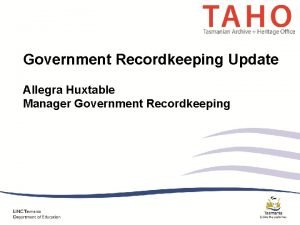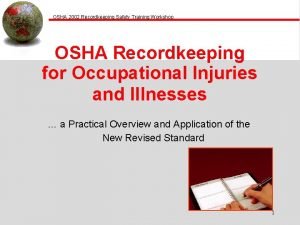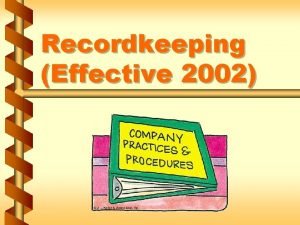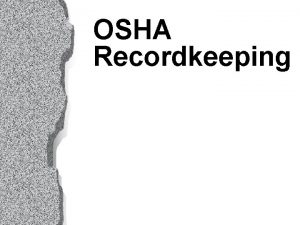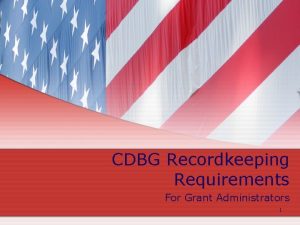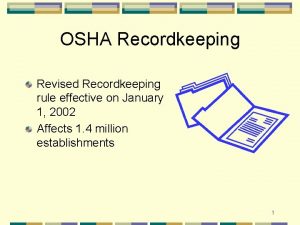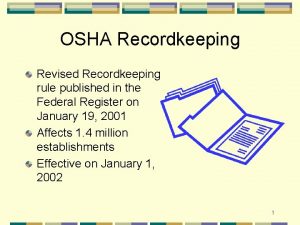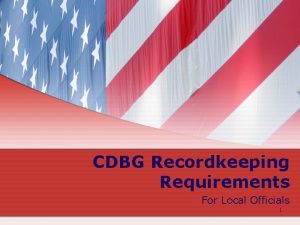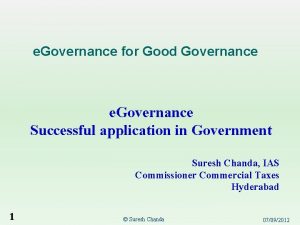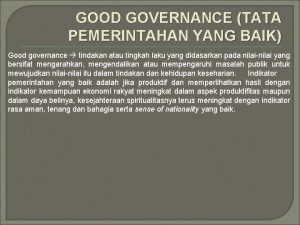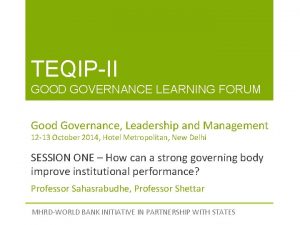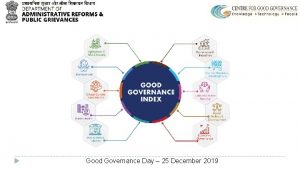Recordkeeping for Good Governance Toolkit Digital Recordkeeping Guidance




























- Slides: 28

Recordkeeping for Good Governance Toolkit Digital Recordkeeping Guidance Funafuti, Tuvalu – June 2013

Guidelines 12 – 19: Aims • To help organisations in the Pacific region put in place appropriate and sustainable solutions for managing their digital records. • To help guarantee that digital records of government activities and decisions are properly managed to ensure their integrity, useability, accessibility and survival for as long as they are needed

Guidelines 12 – 15: Overview • 12: Introduction to Digital Recordkeeping • 13: Digital Recordkeeping Readiness Self. Assessment Checklist for Organisations • 14: Digital Recordkeeping – Choosing the Best Strategy • 15: Scanning Paper Records to Digital Records

Guidelines 16 – 19: Overview • • 16: Systems and Software Checklists 17: Managing E-mail 18: Digital Preservation 19: Implementing a digital recordkeeping strategy

Guideline 12 Introduction to digital recordkeeping Provides an overview on digital records and recordkeeping, addressing key concepts, benefits, risks and myths. Includes a glossary for records managers and for IT professionals

Introduction to digital recordkeeping • • • What are digital records? What is digital recordkeeping? The importance of metadata Risks and benefits of digital records Digital recordkeeping myths

Digital records • Many different types and formats • There is a difference in how we ‘view’ a digital record and paper record

What is digital recordkeeping? • ‘Same, but different’ to traditional recordkeeping • The activities and processes involved in managing a digital record over the course of its life

The importance of metadata What is in the can?

abstract Size Metadata is just a label. title content lineage Quality reports distribution Images Directions for use contact details data quality Unique identifier

Basic record metadata Basic metadata includes: • title • creator, sender, receiver • date when created or received • security classification • registration or control number

Basic record metadata

Other metadata More metadata needs to be added to records when they are: – Stored – Accessed – Changed – Kept, destroyed or transferred

What are the benefits of digital recordkeeping?

The benefits of (good) digital recordkeeping… • Records can be accessed anywhere, anytime (by an authorised person) • Multiple copies of records not needed • Records more easily discoverable and retrievable • Records are more secure, due to access controls • Cost savings – less duplication and doublehandling

What are the risks of digital recordkeeping?

The risks and challenges of digital recordkeeping… • Lots and lots of digital information created and sent today – hard to keep up • Computer software and hardware going out of date (technological obsolescence) • Challenges to authenticity – easy to amend or delete digital records • Loss of security and privacy • Long-term costs

More risks and challenges of digital recordkeeping… • Loss of control due to reliance on vendors and external providers • Lack of access to resources such as IT support and software vendor assistance • Managing change for users • Choosing inappropriate systems or software applications

15 Digital recordkeeping myths 1 Everything on a computer is safe 2 Information generated on my computer is not a record 3 Digital storage is cheap 4 Computers will create a paperless office 5 All information generated or received on my computer at work is my own personal property 6 Scanning is a cheaper and more reliable way of storing information 7 ‘Archiving’ is the same as digital recordkeeping

15 Digital recordkeeping myths cont. 8 Databases such as spreadsheets are reliable forms of evidence 9 Outsourcing will solve all my problems 10 Google will help me to find everything I need 11 Our shared drive is good enough for managing records 12 When I delete an email it has been destroyed 13 Digital records cannot be used as evidence 14 I will be able to access all my records in ten years’ time 15 Recordkeeping is not my responsibility

Guideline 15: Scanning paper records to digital records • Practical advice for organisations considering a scanning project. • Looks at the various processes involved in a scanning project from planning to file storage, risks and issues such as outsourcing, and includes information on technical standards and the different equipment available.

Guideline 15: Scanning paper records to digital records Reasons for scanning: • in the course of business • to improve access • to provide backups as security • to preserve the original records • to save physical storage space

Guideline 15: Scanning paper records to digital records 10 steps in a digitisation project: 1. Why 2. What 3. Technical Specifications 4. Plan 5. Prepare 6. Image capture 7. Metadata capture 8. Quality control 9. Storage & preservation 10. Access

Guideline 17: Managing Email • Practical advice on email management, including why emails should be captured, when to capture it, how to store it, and tips for managing email.

Guideline 17: Managing Email Which emails do you need to keep? • an email that is written, sent or received in the course of your work is a record • emails need to be managed to make sure they can be found accessed for as long as they are needed

Guideline 17: Managing Email Does this email relate to my work? No Not a record Ye s Did I create or send it? Not a record No Did I receive it? No Ye s Does it explain, document or justify an action or decision? Did I need to take action? Ye s Email record Does it explain, document or justify an action or decision? Ye s Email record No Not a record

Guideline 17: Managing Email Options for capturing email records: • capture them into a records management system • print emails and file in a paper system • save emails to a shared network drive

Summary • Digital records are the same (but different) as physical records • Digital records have their own benefits and challenges • Metadata is important • Plan before you scan • Emails are records too
 Office 365 governance toolkit
Office 365 governance toolkit Svenskt ramverk för digital samverkan
Svenskt ramverk för digital samverkan Semianatomic
Semianatomic Example of indirect guidance
Example of indirect guidance Fmcsa document retention
Fmcsa document retention Chapter 3 recordkeeping
Chapter 3 recordkeeping Isda taxonomy
Isda taxonomy 1904 recordkeeping
1904 recordkeeping Zoroastrianism beliefs
Zoroastrianism beliefs Good afternoon tom
Good afternoon tom Hello good afternoon teacher
Hello good afternoon teacher You are good you are good when theres nothing good in me
You are good you are good when theres nothing good in me Good morning good afternoon
Good morning good afternoon Digital strategy toolkit
Digital strategy toolkit Digital advice and guidance
Digital advice and guidance Eclipse live nhs
Eclipse live nhs Good clinical governance
Good clinical governance 4 pillars of governance
4 pillars of governance Historical background of good governance in tanzania
Historical background of good governance in tanzania Good governance for medicine
Good governance for medicine Good university governance
Good university governance Kebijakan publik dan good governance
Kebijakan publik dan good governance Good governance and corporate social responsibility
Good governance and corporate social responsibility Latar belakang munculnya gcg
Latar belakang munculnya gcg Acnc governance standard 5
Acnc governance standard 5 Power bi governance services
Power bi governance services To offer vital services to the general public
To offer vital services to the general public Good university governance
Good university governance Rti and good governance
Rti and good governance
